| We moved on to the next
building which is full of farm equipment. There are some collections of
smaller items on
the wall. If you thought that barbed wire was just that, think again - this
is not a complete collection, and every piece is different. It was first
patented by Joseph Glidden of Illinois in 1873. By 1884 over a quarter of a
million miles was in use. Barbed wire became a multi million dollar industry
and helped settle the west. |  |
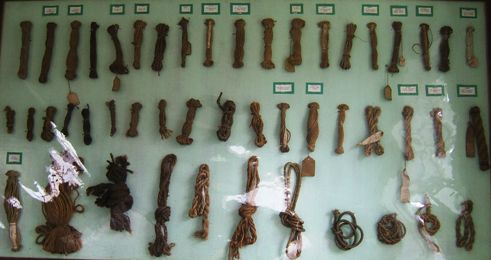 |
I'd seen barbed wire before, but this is new, a collection of baler twine.
OK, we have a strange taste of what is interesting...... |
| Now I have an adjustable
spanner but this is quite a collection. I've seen a number of ornamental
tool collections now. They look quite attractive when artistically arranged. | 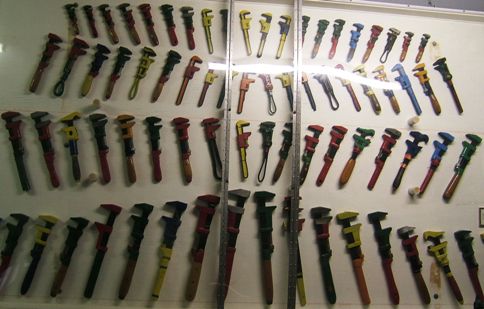 |
 |
This is a serious plough that requires a big tractor to pull it. But this
sort of size became necessary as the fields under cultivation got bigger. |
| The complexities of most
of this equipment are beyond me. Suffice to say there have been some very
clever people who have designed and built harvesting equipment through the
years. This is colourful. | 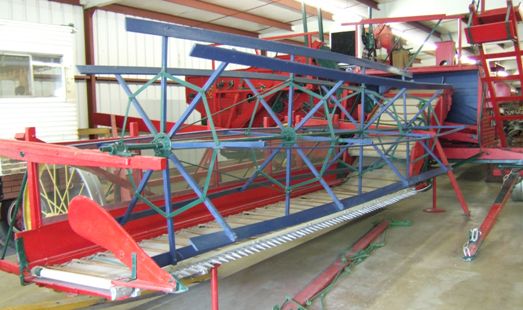 |
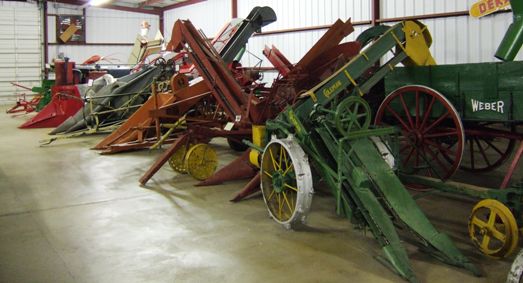 |
The farmers and their families who have lived with this equipment will
recognise it. There are dozens of pieces of equipment on display. |
| Again the scale of the
collection is amazing. This is just the tractor hall. There are over 100
antique tractors here to say nothing of the trucks, threshing machines and
other cultivators. | 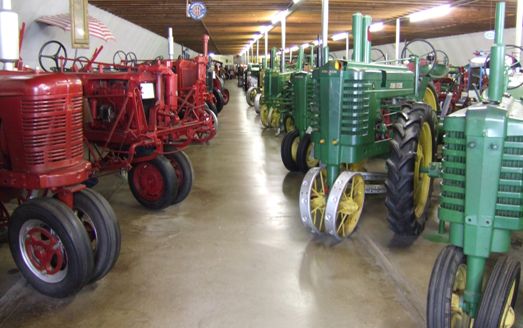 |
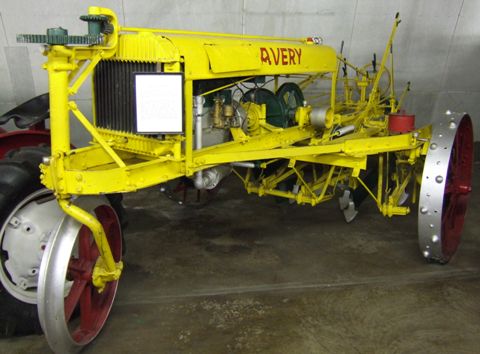 |
There are many makes of tractors on display. A large number of companies
went out of business between the wars and in the depressions. They were all
trying to catch some niche in the market or correct a perceived fault in
other machines. |
| The commonest tractor
between the wars was the Farmall, the model seen here with a home made lifting rack for
stacking bales. | 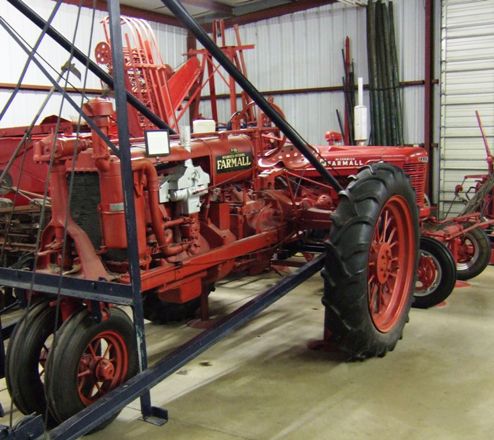 |
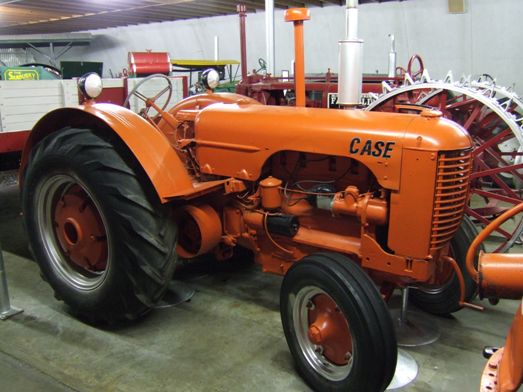 |
This looks relatively modern although Case no longer make farm tractors.
The campsite we are on at the moment has one of these still. |
| Benjamin Holt built the
first track laying tractor in 1904. This is his design of 1917. He went on
to take over his rivals and form the Caterpillar tractor company. The rest,
as they say, is history. | 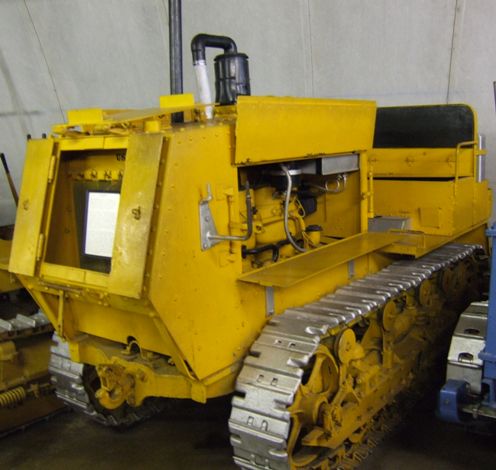 |
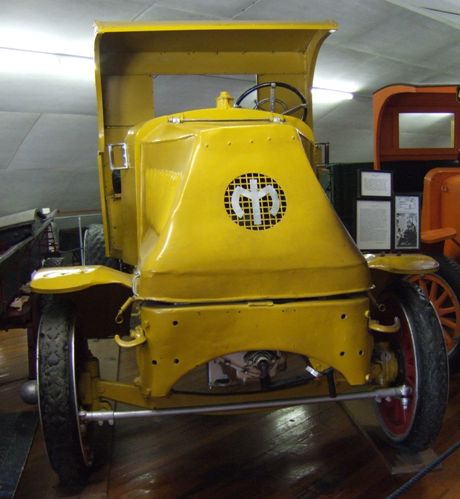 |
From tractors to the upstairs floor and we move to trucks. This is a 1913
Mack truck with a capacity of 7.5 tons. Mack still used solid tyres and
chain drives long after other manufacturers had moved to shaft drives and
pneumatic tyres. |
| A row of trucks all prior
to 1920. The scale of the whole display was beginning to become overwhelming
and we had a lot still to cover. | 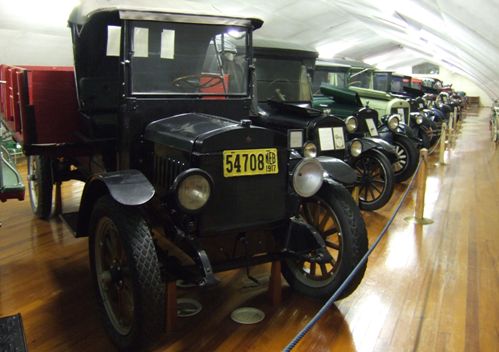 |
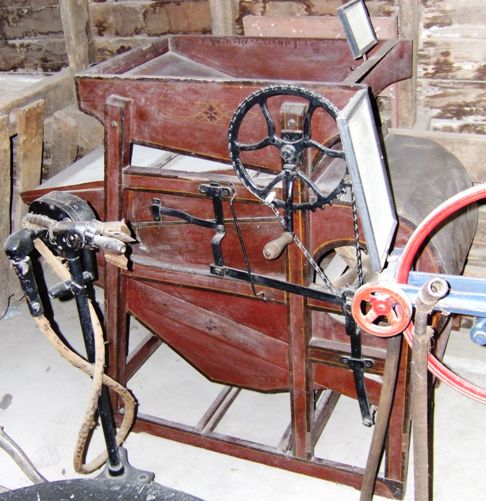 |
This caught our eye because we have one somewhat similar. It is a fanning
machine for separating seeds from their husks. |
| This is an early example of the
central pivot irrigator booms which are now visible all over the prairie
states. Patented in Colorado in 1952, the rights were sold on in 1954 and
today over 110,000 are in use. | 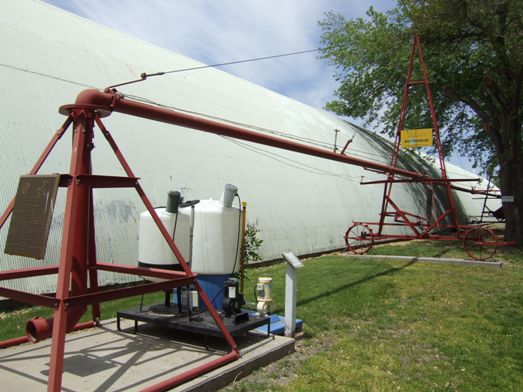 |
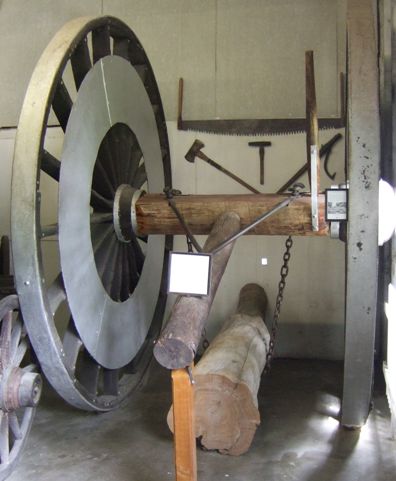 |
These wheels are 15 ft in diameter. They were used to move logs when they
couldn't be floated out. The logs were slung under the axle and then dragged to
where they needed to go. |
| Just by way of a change
we have a nodding donkey used to pump oil from reservoirs that no longer
have the pressure to move the oil on their own. | 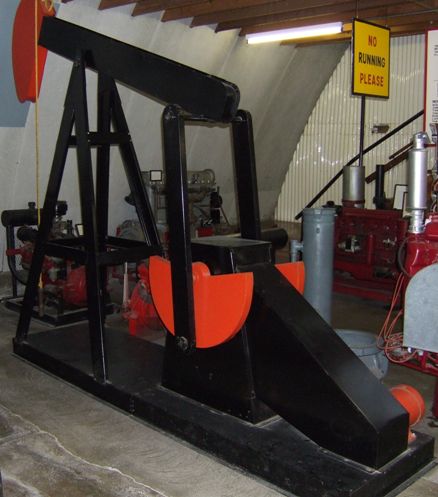 |
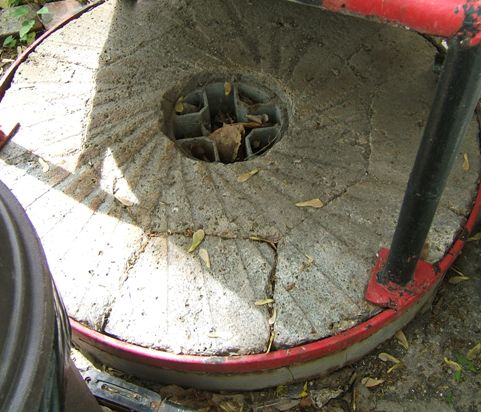 |
This also caught our eye. It is a millstone but it is made in sections which is a
French style. These are the sorts of millstones we have in our mill back
home. |
| Next door is a livery
stable with examples of the saddler's art and carriages as seen here. They
look quite flimsy but were surprisingly robust. | 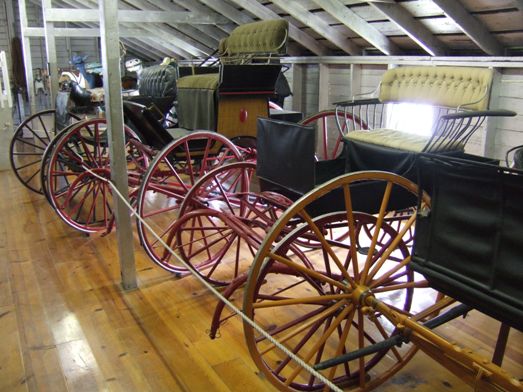 |
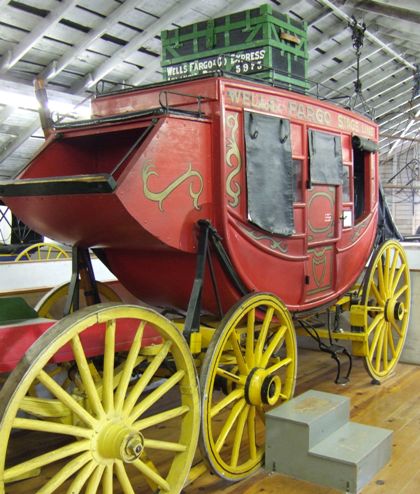 |
Even more robust was this 'Concord' style stagecoach which was the only form
of travel apart from horseback or walking until it was replaced by the
railroad. |
| This is bizarre. It is a
vehicle home built by Wendell Turner in 1953. The 1939 White chassis was
stripped and a new body built on top. The front is to the right.. It is
probably the first RV and was probably 10 years ahead of all others. By 1975
the Turners had travelled over 100,000 miles in it, all over the US including Alaska. | 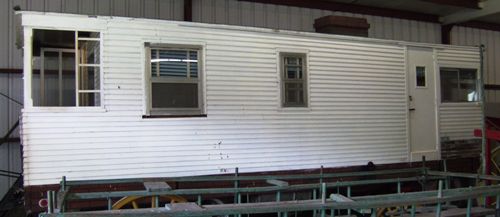 |
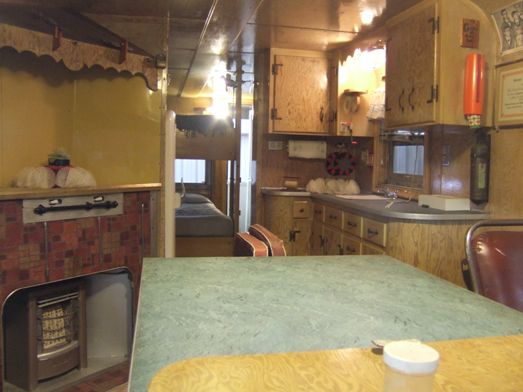 |
Looking through the front windows it looks surprisingly like an RV today.
The driver's seat is just where these words are. The engine is under the
kitchen table. It took over a year to build and contains 11 gross of screws. |
|